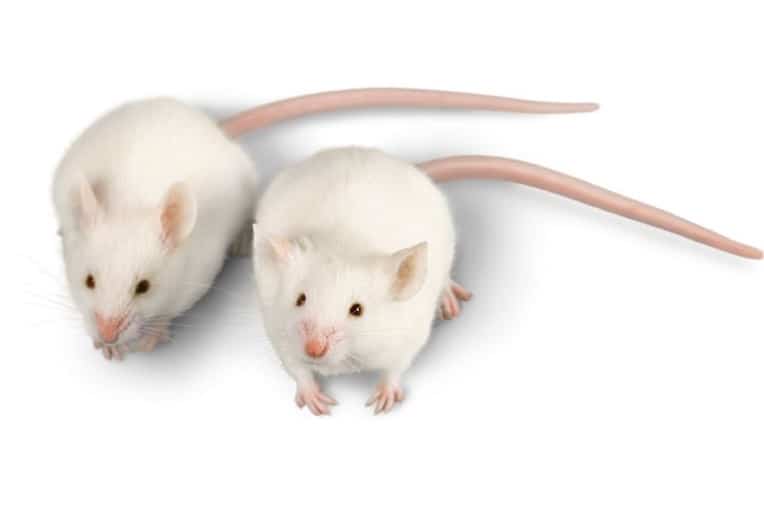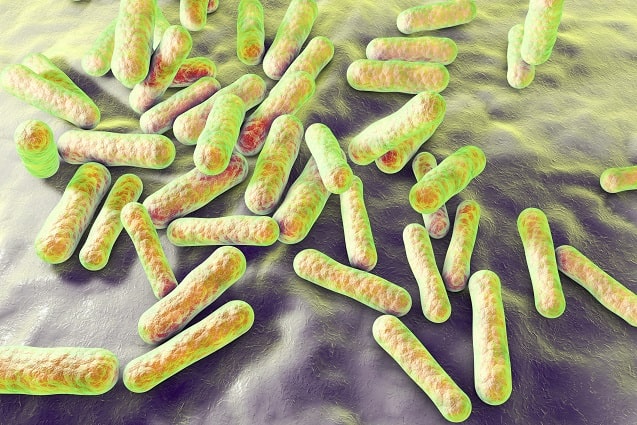 One annoying thing about the human body is that it’s endlessly complex, with so many immune system players perfectly targeted to individual bacteria, and yet, we can’t control any of them.
One annoying thing about the human body is that it’s endlessly complex, with so many immune system players perfectly targeted to individual bacteria, and yet, we can’t control any of them.
We can’t direct a wound to heal, we can’t redirect collagen from our joints to our skin, and we can’t realise that our nose is running, snap our fingers, and have our white blood cell minions chase the influenza down and absorb it. All these molecules our buzzing around inside our body, working for us, yet we can’t do a thing to control them.
Sure, it would be inconvenient, having to make 10,000 calculations per second about 10,000 molecules and 10,000 interactions between them. We would probably do a poor job next to the forces of automaticness.
But still, it would be sweet to truly be in control. Surely we could give it a shot, at least for a day or two. Maybe there’s an ancient part of our brain we can access to give us this ability, with great training in a mystical temple.
Wouldn’t it be great to feel acne bacteria wriggling around in your skin pores, rev up your antimicrobial peptides with a single thought, and take out the acne villain with a clean and efficient strike?
Now, it seems, we finally can, apart from the mind control part.
A new antibacterial peptide discovered
Vitamin A’s main acne power has previously been oily skin, without a doubt. Accutane is simply a synthetic derivative of vitamin A, and that’s why it dries out your skin like a desert if you misjudge the dosage by even a millimetre. Its minor powers include decreasing inflammation, improving your mood, but none are quite as spectacular.
However, it turns out that a second amazing power has been lurking under our noses for decades. In a study released last year (2019), vitamin A was found to fuel the activity of an antimicrobial peptide called RELMa, an obscure protein which kills acne bacteria.
Scientists gathered mice and fed them a vitamin A deficient diet. Later, both the gene levels of RELMa and its proteins were lower in their skin.
Interestingly, previously known antimicrobial peptides in the skin weren’t affected, including cathelicidin, human beta defensin, and S100 proteins. Vitamin A only had a tight relationship with one.
Next, they sought assistance from a known villain, but the only one who could help them – accutane. Make no mistake that accutane is a monster for side effects and I don’t recommend it here, but seeing as it’s artificial vitamin A, it tells us how natural vitamin A in a boiled egg will work too.
The scientists fed isotretinoin (accutane) to mice, or a placebo, and the accutane mice showed higher levels of RELMa in their skin. The connection strengthens. The vitamin A mice also had decreased colonies of the infectious streptococcus pyogenes. The connection strengthens – the mystery peptide translates to real results.
The smoking gun is that one subgroup of mice were missing the genes that created RELMa. Scientists had expertly knocked out the genetic code, and when fed accutane, these mice didn’t experience improvements at all. RELMa didn’t rev up, and streptococcus pyogenes didn’t retreat.
What do we know about this peptide?
It’s one of many antimicrobial peptides made by human skin. Others include cathelicidin created by vitamin D, human beta defensin 1, and dermcidin produced in sweat glands, which is why sweating like a pig in a dirty gym might secretly benefit your acne.
The precise peptide RELMa isn’t found in humans, but a near identical version called RETN is. Overall, mice have four peptides in the family, while humans have two – the other is RELMbeta. This closely related peptide was found in the colon, suppressing gram negative bacteria, and today’s study brings the action to acneville.
RELMa was no secret – it was identified in lung cells, fat cells and white blood cells – but never in the skin.
If the immune system is a vast army, an overpowering but clumsy blunt force weapon, then peptides are the crack squad of 7 that sneaks into the countryside and takes out the bacteria silently.
It’s an efficient, in-out operation. If we really were the grand commander of our own immune system molecules, able to control each, then these peptides would be ones we dispatch. They’re the professionals which don’t cause the collateral damage that swells up the pore and creates acne.
Antibacterial peptides are all over nature. Human skin produces beta-defensin 1 to take out its enemy p.acnes. Staphylococcus epidermidis produces epidermin to take out its enemy p.acnes. Staphylococcus gallinarum produces gallidermin to take out its enemy p.acnes.
Hmm – I’m noticing a pattern here. Anyway, back to the study…
Part two – the peptide kills numerous bacteria strains
 Next, the scientists leapt into a petri dish with this peptide and started blasting the bacteria greedily crawling towards them. This happened in their minds, but they did test strains such as streptococcus pyogenes, staphylococcus aureus, and in a great stroke of luck, propionibacterium acnes.
Next, the scientists leapt into a petri dish with this peptide and started blasting the bacteria greedily crawling towards them. This happened in their minds, but they did test strains such as streptococcus pyogenes, staphylococcus aureus, and in a great stroke of luck, propionibacterium acnes.
The Pseudomonas aeruginosa behind pneumonia was inhibited by 99% in just 2 hours. RELMa reduced other strains, Citrobacter rodentium and Escherichia coli K12 by weaker, but still significant amounts. The best was the gram positive bacteria streptococcus pyogenes, a player in the tooth decay game, and of course “strep throat”.
That hints strongly at the destruction of p.acnes, which is gram positive itself, and the peptide duly delivered. The mouse version inhibited p.acnes only moderately. But its human counterpart RETN performed far better, with p.acnes “highly susceptible”.
Our progress so far – a common dietary nutrient increases a peptide which is known to destroy acne bacteria.
As for the causes? Different antibacterial substances behave differently. Cinnamaldehyde in cinnamon likes to warp a bacteria’s cell membrane, causing catastrophic structural damage. Succinic acid made by friendly microorganisms likes to enter the cell membrane and decrease the bacteria’s PH. RELMa is in the former camp, a membrane shredder.
How did they know? Because it failed to inhibit staphylococcus aureus decently, the hospital stalking MRSA bacteria.
S.aureus is known to produce a protein called staphyloxanthin which gives its cell membrane unusual strength, but when scientists tested a rare mutant s.aureus strain which doesn’t produce staphyloxanthin, RELMa suddenly became effective again. A previous study by the same team found that RELMbeta produced pores which warped cell membranes the moment it floated into them.
The scientists thought of everything, and to be completely sure, they crafted a fat-based liposomal solution which resembled a bacteria’s cell membrane precisely. Dye was injected into the membrane, dye which fluoresces when diluted, and when the RELMa peptide acted on the bacteria, that’s what happened. The colour changed, proving that the membrane had weakened. The weakening occurred with both mouse RELMa and human RETN.
Never resting on their laurels, they altered the petri dish to mimic human skin, lowering the PH to 5. RELMa worked even more effectively. They also added cholesterol, as basic human skin cells (keratinocyotes) are rich in cholesterol. The damage of RELMa decreased, so they theorised that cholesterol acts as a natural buffer, so that your skin’s weapon doesn’t bounce back and hurt healthy cells.
Our progress report – the peptide is a real contender in human skin, and not obscure and irrelevant to acne.
But does the peptide calm the skin?
The time had come to give the mice an acne-clearing treat. The wild mice and the RELMa deleted mice were brought back. A subgroup of mice was germ free, raised in a sterile environment.
It was totally missing the natural ecological rainforest of bacteria hiding on all animal’s skin. This made it a perfect test, and when staphylococcus aureus was introduced for the first time in their lives, a telling result occurred. The RELMa genes suddenly revved into action.
It wasn’t the only gene affected, with a “broad impact” on other peptides. However, the same RELMa fire up was detected when natural microorganism samples from the wild mice were transplanted on them.
Even before any experiment was conducted, the wild mice with normal genes had higher RELMa levels. The peptide was busy performing its daily duties, keeping bacteria controlled.
Apparently, the results “establish that bacteria stimulate Retnla expression in the skin“, which sets the connection to acne bacteria in stone.
The facial ecosystem was compared next. It was RELMa gene knockout mice versus wild mice again, and the differences matched the petri dish results closely – the sensitive streptococcus pyogenes and staphylococcus epidermidis were increased. The threads of this experiment just tightened.
Then things got real. The mice were injected with streptococcus pyogenes directly (cue dramatic music). Previously, it was the best inhibited bacteria – if RELMa makes no difference now, then our experiment is off the rails.
It’s akin to walking past a coughing businessman in an airport, or hugging your acne-covered teenager nephew, and taking the worst p.acnes strains off him. Good news then – the wild mice killed off plenty of s.pyogenes, but the RELMa knockout mice remained at injection levels after 5 days. They had made no progress without this secret weapon.
The loss of this peptide, controlled by vitamin A from milk, meant a loss of their antibacterial defences.
S.aureus was injected too, and the new colony retreated by identical amounts in both groups. That’s good, because RELMa didn’t inhibit s.aureus in the petri dish experiment either – another antibacterial peptide like cathelicidin must be in charge of it. Everything fits together like a jigsaw puzzle in this study.
What solidifies the link to acne is that when injected with s.pyogenes, the swelling or erythema was also higher in the RELMa deficient mice group. It’s a mirror image of the swelling and redness from p.acnes, AKA a pimple. We’re teetering on the edge of a clear skin cure, just waiting to break through.
Progress report – the vitamin A peptide makes a difference in real life skin.
The peptide works in humans
Humans and mice might share a common ancestor, about 80 million years ago, crawling along a tree branch trying to dodge pterodactyls. However, your last mouse relative was probably your great x 15 million grandfather (I doubt his picture is on your wall), so the scientists took the final step and analysed human skin.
Firstly, they scoured the genetic code. Vitamin A compounds like accutane or the topical treatment tretinoin work by binding to retinoic acid receptors (RARs), which go on to activate genes. Their sensors picked up 22 RARs in human skin samples (not living people) which could affect RETN down the road.
Then, with their human sebocyte samples, cells from the sebaceous glands that make oil, they added retinol and watched as the RETN-promoting genes became more active.
Then they used a chemical which is proven to block RARs (BMS493 is the name – it’s not particularly relevant). Like magic, the stimulation of RETN also disappeared.
Vitamin A from eggs or milk stimulates RAR receptors in the exact same way. With humans, we’re only missing an experiment on live subjects. I doubt they’d have been short of volunteers – a billboard on the highway screaming “free clear skin” would have done the trick.
The potential of this acne peptide
Bringing everything together, this massive study has just made the following discoveries.
ONE – dietary vitamin A increases an obscure antibacterial peptide called RELMa, and its human equivalent RETN.
TWO – human skin is full of genes directly connecting vitamin A and this peptide.
THREE – mice missing the genes for this peptide have higher rates of bacterial infection.
FOUR – the peptide is able to kill p.acnes, the big bully of acne bacteria, in a petri dish.
This discovery really adds to the power of vitamin A. If you’re deficient, then you could have previously expected the taps of oily skin to dry out, but now, reduced inflammation is also on the menu. It makes topical treatments containing retinol all the more promising.
It uncovers another obscure, little known acne fact to add to our treasure trove. It’s similar to vitamin B3 acting as a lever to decrease oily skin regardless of the cause (which even vitamin A can’t accomplish). It’s the light side mirror image of the receptors for stress hormones that p.acnes has, which make it more aggressive – a weird, obscure, microscopic power which a caveman couldn’t have possibly detected, but this time, it works in our favour.
Killing p.acnes is great of course. You remove its own inflammation, through toxic by-products of its fermentation activities. However, it also cuts the immune system insanity out of the equation – if it kills off p.acnes through these more focussed and direct peptides, it won’t need to unleash an all out fiery assault.
The scientists had some bonus untested explanations. The first was that RELMa might be dispatched after p.acnes stimulates immune system sensors called toll-like receptor 2. Seeing as TLR2 is how p.acnes alerts the immune system response normally, this is bogstandard – it’s what you’d expect.
But a more interesting theory was that RELMa detects p.acnes using the “capture of bacterial signals”, maybe proteins in its cell wall, or pores it releases. Footprints of its presence, in other words. This could happen independently of the main inflammatory response – RELMa sneaks in first like a shopper sneaking out at 6am before the crowds arrive. Thus, we come back to cutting off the acne-causing fiery mayhem.
This study also makes accutane an even better weapon – we’ve got to admit it.
Accutane dealers standing on street corners with their thick trenchcoats will be looking very smug now, but we don’t recommend against accutane because it doesn’t work. We recommend against accutane because of dry eyes, suicidal thoughts, and fertility problems.
The story through the ages
 The interesting thing is that vitamin A’s infection-busting properties have been known for decades. Deficient children in Africa have more infectious diseases, but what’s always been a mystery is how it works.
The interesting thing is that vitamin A’s infection-busting properties have been known for decades. Deficient children in Africa have more infectious diseases, but what’s always been a mystery is how it works.
Starting in the 1920s, there was a mounting trend gathering steam that vitamin A was the “anti-infective molecule”. A scientist called Dr Edward Mallanby from the University of Sheffield owned a pack of 330 dogs (that would probably give him some street cred). Two thirds of them had been made purposefully vitamin A deficient, and an infection of bronchopneumonia was rapidly spreading. It appears that Dr Mallanby didn’t connect the two facts initially, but when they died, he conducted a postmortem and noticed that the infection was far worse in the vitamin A deficient dogs. A brainwave later, and he was hatching vitamin A experiments for children with respiratory infections.
Other investigations tested measles, the child-killing disease which swept the drizzly streets of London in the 19th century. This was before the measles vaccine, and Dr Joseph Ellison fed patients in hospital beds either cod liver oil (packed with vitamin A) or a placebo, slashing their death rate by half.
By 1940, at least 16 studies had tested vitamin A against respiratory infections. At the outbreak of World War 2, vitamin A was even recommended for underground bomb shelters. The grimy conditions were so dirty and cramped, with mothers and children hiding in the inner cities as the luftwaffe prowled, that the government was terrified of bacterial infections finishing the job when the Germans couldn’t. They planned to fortify margarine with vitamin A, but instead handed out cod liver oil to pregnant and breastfeeding women and children under 5.
After World War 2, the investigations abruptly halted. Vitamin A was barely tested against infections for 50 years.
Maybe everyone was so distracted with sinking U-boats that vitamin A simply slipped out of their mind. More likely, it’s because penicillin and sulfa antibiotics were born.
Then in the 1980s, investigations resumed, as Indonesian children were observed with higher mortality rates after only mild vitamin A deficiency. But they were still banging their heads against the wall trying to find a reason.
Finally, the dominoes began to fall. In 2003, the related resistin-like molecule β (RELMβ) was discovered in the gut, but at first, it was thought to dabble mainly in insulin control. Then in 2017, it was seen generating pores which destroyed bacterial cell membranes upon contact, like a poisonous purple bubble floating towards you in your kitchen, gaining inch by inch, which you somehow just can’t dodge. The study was by the same team as today.
Today, we’ve now answered the final question, until of course, the next “final question” inevitably appears.
The verdict
The natural secrets of clear skin are growing by the day, and this study has just added another jewel to our vitamin A crown.
What’s next? Could zinc be a master unclogger of already blocked pores? Could resveratrol from red wine have an unparalleled ability to protect hyaluronic acid, and preserve your skin’s moisture as you age?
We’ll cover any developments right here. It’s inevitable that more acne discoveries are right around the corner.
Thanks for reading!